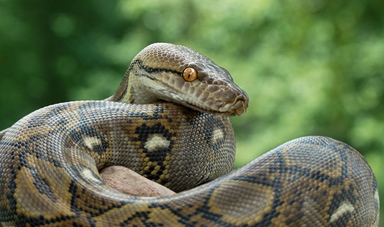Loading component...
At a glance
When Walter the dentist killed Cecil the lion, things escalated rather quickly.
In a cautionary tale about the modern face of animal conservation and social media, American dentist Walter Palmer became a reviled figure in July 2015 after posting the results of his “trophy hunt” in Zimbabwe on Facebook.
The recreational hunter from Minnesota had tracked down the lion over two days, initially wounding, then killing it with a crossbow.
Among other problems was that the lion, known as Cecil, was actually a tourist attraction at the Hwange National Park.
It appeared that Cecil had roamed outside what had been a protected area and Palmer's guides believed they were acting within the scope of their hunting permit. Ultimately it was determined that no crimes had been committed.
Social media saw it otherwise. Within 24 hours of the incident going public there were 670,000 mostly hostile tweets about the incident.
Palmer received death threats, his dental practice was targeted and a “Justice for Cecil” petition calling for punishment received 1.2 million signatories.
The benefits of hunting
While the immediate denouement was that trophy hunting was inherently wrong and figures like Palmer, who allegedly paid around US$50,000 for the hunt were to be abhorred, some more nuanced perspectives on trophy hunting and the economic benefits of killing wildlife in a sustainable manner are starting to gain traction.
“Trophy hunters will potentially pay a vast amount of money to take out a very small number of individual [animals] and they would typically be after relatively old males that are probably no longer critical to population function,” says evolutionary biologist and ecologist Rick Shine.
“If you played it right, you could get all sorts of sustainable use and those resources could then go to the local communities and that would provide an incentive to keep those animals around.”
Trophy hunters may get the most press and social media clicks but Shine, a professor of biology at Macquarie University, believes there also needs to be broader conversations about wildlife and practical conservation.
Banning crocodile and snake skins
A recent fashion industry push to have crocodile and snake skins banned grabbed Shine’s attention after major UK-based retailer Selfridges said it would no longer sell the byproducts from reptile skins, supposedly in order to protect their over-exploitation.
However, with more than five decades’ experience studying the ecology of snakes and other reptiles, Shine says simple blanket bans can be counterproductive.
He wrote a paper on the python slaughterhouses of Sumatra in 1995 and a follow-up in 2015 with Daniel Natusch, who returned there two decades on.
“The critical issue in terms of conservation was, was it sustainable? I went in there expecting it wouldn’t be … but in fact we discovered the species living around the villages, eating the rats around the villages, growing quickly and with huge numbers of eggs,” Shine says of his 1995 visit, adding Natusch’s findings 20 years later were much the same.
“These were camouflaged ambush predators that can survive, even in built-up areas. It is clearly a sustainable harvest and is incredibly important to the local people.”
An incentive to preserve
Shine says that placing an economic value on pythons gave people a motivation to protect the local forest instead of selling it or allowing it to be turned into palm oil plantations.
“It’s rather heartbreaking when you see organisations like Selfridges in the UK deciding they are going to ban the sale of exotic skin in the name of conservation. The reality is that is the worst thing you could possibly do,” he says.
In his 2014 book, Wildlife Conservation: In the Belly of the Beast, Darwin-based zoologist Grahame Webb outlines instances where killing wildlife has proved sustainable.
He gives particular regard to crocodiles, specifically the Australian saltwater variety, which faced possible extinction in the Northern Territory when numbers dropped to around 3000 in the early 1970s. With culling banned, the population is now thought to exceed 100,000.
Webb notes, “Where people must share their environments with crocodilians, without adequate protection, there is often a serious price to pay. So incentives for people to conserve rather than kill crocodilians need to be real and tangible.”
The benefit is tangible in the Northern Territory.
A government report in 2017 found that the value of farm-related crocodile tourism and retail (including skins and by-products), egg collection in remote communities, and veterinary services in 2014-2015, was A$106.7 million.
Calls for managed hunts have been dismissed, something else that Webb thinks is worth a conversation given his own research is suggesting it is creating a major problem elsewhere.
“Timor Leste is losing one person a month to saltwater crocs. It looks as though they are swimming from Australia. Our successful program has created a bloody humanitarian nightmare,” he says.
From a pure conservation perspective, the local response has been a somewhat muted suggestion that a more “sustainable” use of wildlife should be considered.
Both the Australian Conservation Foundation and the Australian branch of the World Wildlife Fund didn’t feel it was in their scope to address the issue, when contacted by INTHEBLACK.
Webb and Shine both appreciate it’s a multi-layered topic and one that has to be explored on a case-by-case basis, but they argue that dogmas won’t help humans or animals.
Says Shine: “It comes down to this conflict between two different ways of viewing conservation. One is the welfare of individual animals. It’s no fun for a giant python to be collected, killed and skinned obviously.
On the other hand, allowing that trade to continue is critically important for local people in a place where there is very little disposable income and it looks to be the best way we can guarantee the survival of those populations so that our grandkids can see them.”

